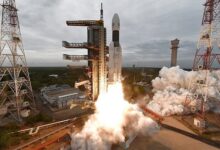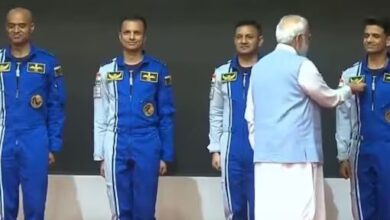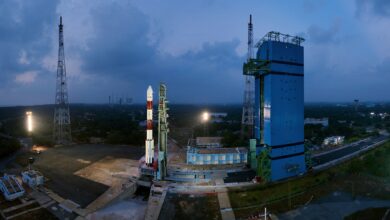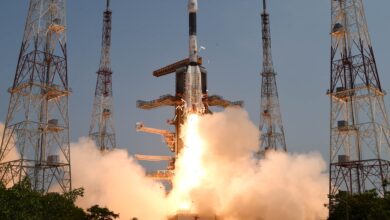Chandrayaan 3: Exploring Beyond The Moon With Ambitious Lunar Mission

- The south polar area is also home to the largest crater on the moon.
- Every government needs technologies that are both for the future and for the present, as well as a well-thought-out way to divide its resources between the two.
Who doesn’t like to look up at the Moon? Whether it is gibbous, crescent, or full, the Moon mesmerizes children, artists, and anyone who connects with nature because of its calm beauty and the feelings it creates.
Scientists are interested in the Moon because they want to know where it came from, what it’s like, and if it might be possible to live there. To do these things, they have to go to the Moon. Not many countries have done these kinds of studies, but India is in a good situation to do so because it has a strong industrial and technological base and a lot of trained people. The Indian Space Research Organisation (ISRO) can add this to its list of accomplishments. It makes sense that bright young people from the best schools in the country want to go there.
Chandrayaan 1
ISRO’s first try was the Chandrayaan 1 (or “Lunar Vehicle 1”) mission, which started in October 2008 with the launch of the Polar Satellite Launch Vehicle (PSLV), which had been used before with great success. A satellite-like device called a lunar rover and an impact probe were on the rocket. The impact probe was sent to the south polar region of the Moon by the orbiter. This was done so that data could be collected that could be used to build a lunar rover that would be part of the payload on a later mission.
As the impactor probe went toward the Moon, it took measurements of the chemicals in the lunar atmosphere. Notably, this journey proved that there are water molecules on the Moon, which could be important for future missions with people. The robot also carved the flag of India onto the Moon as a sign that we were there.
The mission did not last two years as expected, which may have been because the orbiter got too hot, but it did accomplish most of its scientific goals. It got a lot of praise from people all over the world, which shows how well it did.
Chandrayaan 2
Chandrayaan 2 was the next mission of this kind. It was launched in July 2019 by a Geosynchronous Satellite Launch Vehicle (GSLV). It carried a Moon lander with a robot that would be dropped on the Moon. The lander crashed on the Moon’s surface because of a program problem, and the rover did not separate from the lander. This made it impossible to study the Moon’s surface any further.
Shanmuga Subramanian, an amateur space fan from Chennai who is good at analyzing images, found where the lander’s junk was. NASA later confirmed this. Citizens taking part in big science projects is a good trend, and scientists should try to make more of these kinds of projects possible.
ISRO is currently planning Chandrayaan 3 to show how safe it is to land and move around on the moon’s surface. The launch is set for 2:35 p.m. on July 14, 2023. Launch Vehicle Mark III (LVM 3, also called GSLV Mk III) will carry out the mission. The vehicle will carry a lander that is connected to a section that will move forward. The second one will take the first one into a circular orbit around the Moon, and then the rover will drop down to the surface. The lander module will carry a rover and a few other research tools that will be used on the Moon. It is believed that the lander and the rover will work for about two weeks.
As with earlier missions, the scientific mission will look at things like the chemical makeup of the moon’s surface, seismic activity in the area, and the concentration of plasma. The propulsion module will have a payload called “Spectro-polarimetry of Habitable Planet Earth” (SHAPE), which will track radiation from Earth to help find signs of life that future missions can use to look for signs of life on livable exoplanets. Chandrayaan 3 will also look past the Moon.
Chandrayaan 2 taught us a lot that will help us avoid design flaws that are likely to lead to mistakes. Some of these “upgrades” have already been made, like making the lander’s legs stronger and updating the software to include failure cases.
Importance of the missions
Missions like Chandrayaan are important because they involve people from many different countries. These projects are international teams working together to improve scientific exchange and friendship between countries.
Future missions to study the south pole of the Moon could include people from different countries. Some parts of these holes don’t get any sunlight. These cold, dark places have gas, water, and ice in them. They could also have stuff from the beginning of the Solar System, which could help us figure out how it got here. The south polar area is also home to the largest crater on the moon. It is still not clear where this hole, which was made about 4 billion years ago, came from. So learning about our neighbor in space will help us learn a lot about the universe as a whole.
Why should India spend money on these high-tech areas instead of spending in technologies that are already out there and can be used for the public good more easily? Because they can also be used for the good of society. Developing countries need to understand these ideas in order to improve the lives of their people. Space tools are also important for predicting the weather, figuring out what resources are in the ocean, figuring out how much forest cover there is, communicating, and protecting ourselves, just to name a few. Every government needs technologies that are both for the future and for the present, as well as a well-thought-out way to divide its resources between the two.
In fact, R. Chidambaram, who used to be the Principal Scientific Advisor to the Government of India, once said that if a country invests in a new technology, it becomes a leader in that area and has more power when negotiating with other countries. This, in turn, will help a country improve its science and technology base, which will help its people and boost its reputation.







Facebook Comments